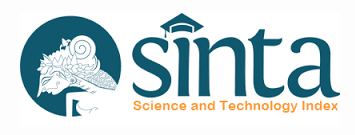EKSISTENSI KOMUNIKASI TERHADAP UPAYA PEMULIHAN SOSIAL EKONOMI PASCA BENCANA DI KABUPATEN LUWU UTARA
Abstrak
Communication has always been a medium for every human being to coordinate or interact socially, whether in the face of a disaster or not. It becomes normal when communication is needed in post-disaster recovery efforts. Although communication is not able to completely change the overall socio-economic aspects, it is not surprising that communication cannot be separated in every disaster management. Because, communication can present an organized handling system. The purpose of this research is to examine the extent to which communication plays its role and function in rehabilitation (recovery) efforts after the extraordinary fury of banjir bandang natural disasters. Where the incidence of natural disasters that hit North Luwu Regency caused a lot of losses, especially from the socio-economic aspects (education, housing, health, religious activities, facilities and infrastructure, trade, umkm, and also agriculture). This is because many people have experienced a downturn, even parts of Masamba and Baebunta sub-districts also feel the impact. In this research the researcher applied a descriptive qualitative research method using a case study approach. Where in determining the data source, the writer uses purposive sampling. The results of this study are that in this recovery effort there is a joint responsibility (North Luwu Regency government)Referensi
Asy’ari, Q. (2018). Analisis Dampak Sosial Ekonomi Pasca Bencana di Kabupaten Pamekasan (Studi Kasus Banjir, Longsor dan Kekeringan di Pamekasan 2007). J-Macc, 1(2), 153–168.
bnpb.go.id. (2020). Tantangan dan Kendala yang Dihadapi. Bnpb.Go.Id. https://bnpb.go.id/berita/Giat Pembersihan Jalan Pascabanjir Bandang Luwu Utara, Tantangan dan Kendala yang Dihadapi
Budi, S. (2011). Komunikasi Bencana (A. Ishak, Aswad; Junaedi, Fajar; Budi, Setio; Prbowo (ed.); Pertama). Buku Litera; BPC Yogyakarta, ASPIKOM.
Bungin, B. (2014). Sosiologi Komunikasi. Prenada Media Group.
Cangara, H. (2016). pengantar ilmu komunikasi. PT Raja Grafindo Persada.
Creswell, J. W. (2014). Research Design (Pendekatan Metode Kualitatif, Kuantitatif, dan Campuran) (KE EMPAT). PUSTAKA PELAJAR.
Hukum Online.com. (2009). Undang-Undang Republik Indonesia Nomor 32 Tahun 2009 Tentang Perlindungan Dan Pengelolaan Lingkungan Hidup. April. https://m.hukumonline.com/pusatdata/detail/lt4b2885a7bc5ad/node/1060/undangundang-nomor-32-tahun-2009
Johnson, C. A. (2007). Social capital and the search for information: Examining the role of social capital in information seeking behavior in Mongolia. Journal of the American Society for Information Science and Technology, 58(6), 883–894. https://doi.org/10.1002/asi.20561
Kementerian, A. I. (2006). Al-Qur’an dan terjemahan. CV. Penerbit Diponegoro.
Kusumasari, B. (2014). Manajemen bencana dan kapabilitas Pemerintah Lokal. Gava Media.
Lestari, P. (2011). Komunikasi Bencana (A. Ishak, Aswad; Junaedi, Fajar; Budi, Setio; Prabowo (ed.); Cetakan Pe). Buku Litera; BPC Yogyakarta, ASPIKOM.
Littlejhon, Stephen W; Foss, K. A. (2009). Teori Komunikasi (Theories of Human Communication) (9th ed.). Salemba Humanika.
Muktaf, Z. M. (2017). Studi Literasi Bencana dalam Perspektif Ilmu Komunikasi. Apik Ptm, 1–12. http://repository.umy.ac.id/bitstream/handle/123456789/14605/Studi Literasi Bencana dalam Perspektif Komunikasi repository.pdf?sequence=1&isAllowed=y
Parsons, W. (2006). Public Policy (Pengantar Teori dan Praktik Analisis Kebijakan) (T. B. Wibowo (ed.); Cetakan Ke). Kencana.
Rijanta, R; Hizbaron, D.R; Baiquni, M. (2018). Modal Sosial Dalam Manajemen Bencana. Gadjah Mada University Press.
Sugiyono. (2006). Metode Penelitian Kuantitatif Kualitatif dan R&D. Alfabeta.
Yin, R. (2012). Studi Kasus Design & Metode (D. Mudzakir (ed.); Revisi). PT Raja Grafindo Persada
Once an article was published in the journal, the author(s) are:
granted to the journal right licensed under Creative Commons License Attribution that allows others to share the work with an acknowledgment of the work's authorship. permitted to publish their work online in third parties as it can lead to wider dissemination of the work. continue to be the copyright owner and allow the journal to publish the article with the CC BY license receiving a DOI (Digital Object Identifier) of the work.





